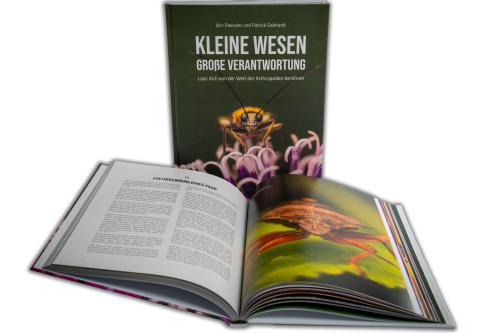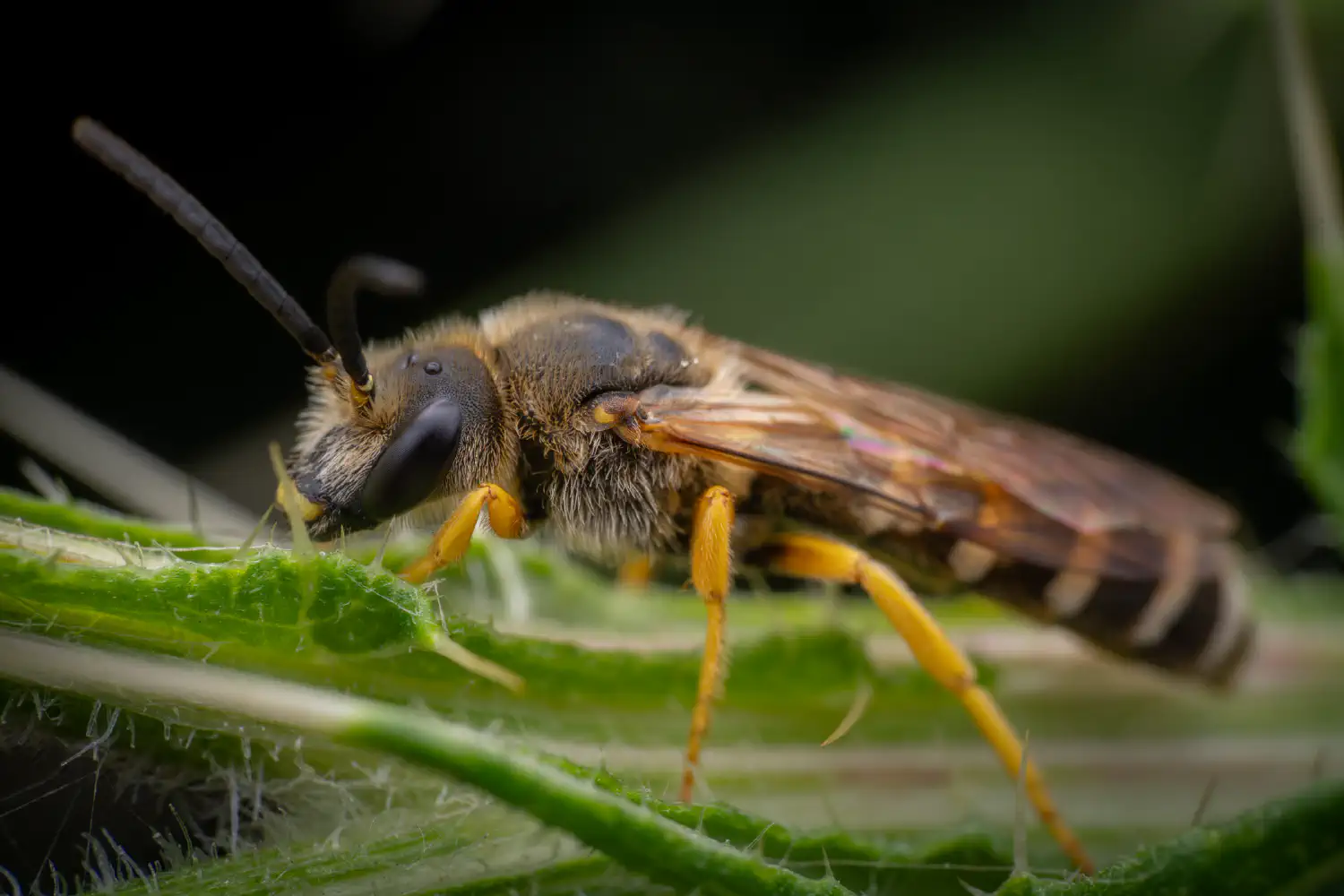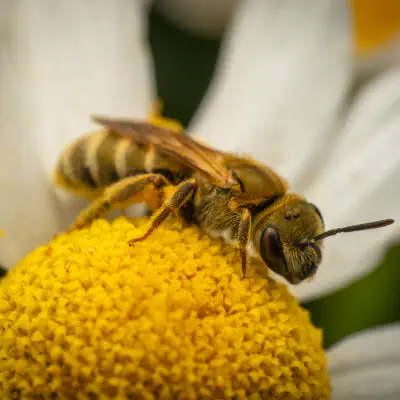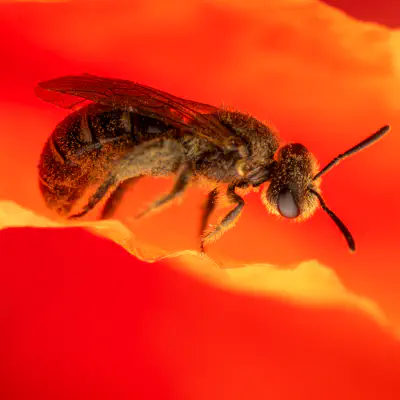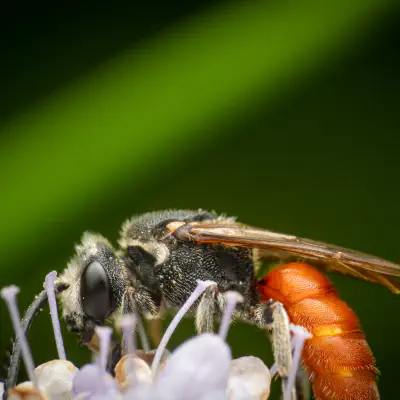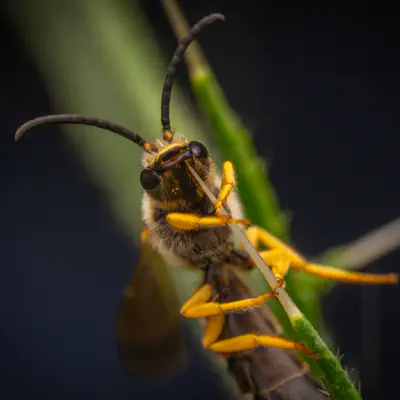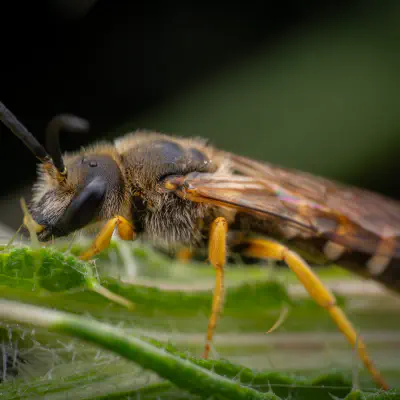Sweat Bees Lat. “Halictidae“
The Halictidae is the second largest family of Apoidea bees. Halictid species occur all over the world and are usually dark-colored and often metallic in appearance. Several species are all or partly green and a few are red; a number of them have yellow markings, especially the males, which commonly possess yellow faces, a pattern widespread among the various families of bees.
Hierarchy
Ecology
Most halictids nest in the ground, often in habitats like clay soil and river banks, though a few nest in wood. They mass-provision their young; a mass of pollen and nectar is formed inside a waterproof cell, an egg laid upon it, and the cell sealed off, so the larva is given all of its food at one time, as opposed to “progressive provisioning”, where a larva is fed repeatedly as it grows, as in honey bees. Some species line their tunnels with lactone secretions to help workers return to the nest. It is thought that each individual bee has its own unique chemical signature. All species (except for kleptoparasites) are pollen feeders and may be important pollinators.
Economic importance
Some Halictids are important in the pollination of crops. Among these are the alkali bee, Lasioglossum vierecki and Lasioglossum leucozonium. While some halictid species are oligoleges (e.g., Rophites algirus, which only visits the flowers of hedgenettle plants.), most are generalists making them potentially valuable overall pollinators.
Stinging
Only females have the ability to deliver a sting. Due to their non-aggressive nature, they are only likely to sting if disturbed; the sting is minor. The most common instances of stinging occur from swatting at or accidentally making contact with a halictid trying to get a lick of one’s sweat, seeking the dissolved electrolytes.
Phylogeny
Halictidae belongs to the hymenopteran clade Aculeata (stinging Hymenoptera), superfamily Apoidea (bees and wasps), series Anthophila (true bees). Fossils from this family are typically found in amber from the Baltic Region and the Dominican Republic and imply that Halictidae have existed since at least 96-75 million years ago. The oldest fossil record of Halictidae dates back to Early Eocene with a number of species, such as Neocorynura electra and Augochlora leptoloba known from amber deposits. Currently, the family is divided into four subfamilies, many genera, and more than 2000 known species. Rophitinae appears to be the sister group to the remaining three subfamilies (Nomiinae, Nomioidinae, Halictinae) based on both morphology and molecular data.
External links
Family Halictidae Large format diagnostic photos, information. Everything About the Sweat Bee - Description and photo of the sweat bee. Image Gallery from Gembloux Archived 2016-03-03 at the Wayback Machine BugGuide – Search: Halictidae (North American species only). Online identification guides for eastern North American Halictidae Halictidae on the UF / IFAS Featured Creatures Web site
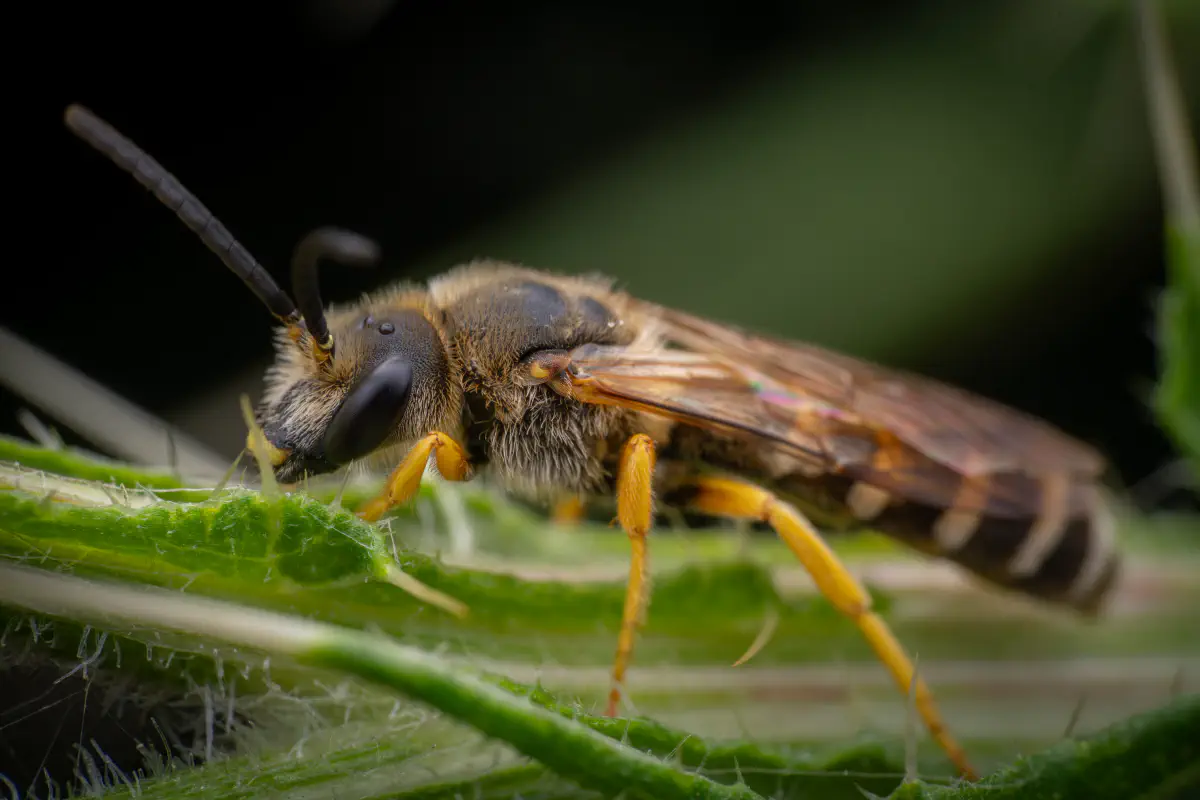
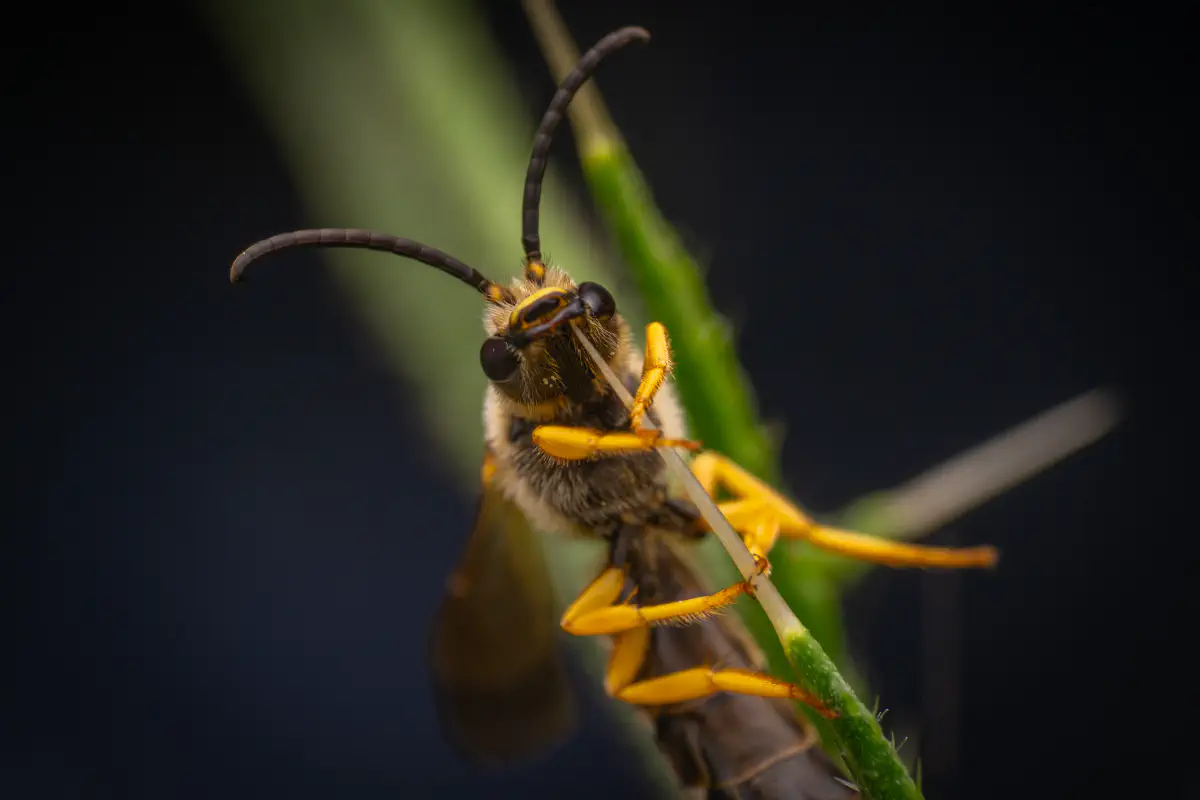
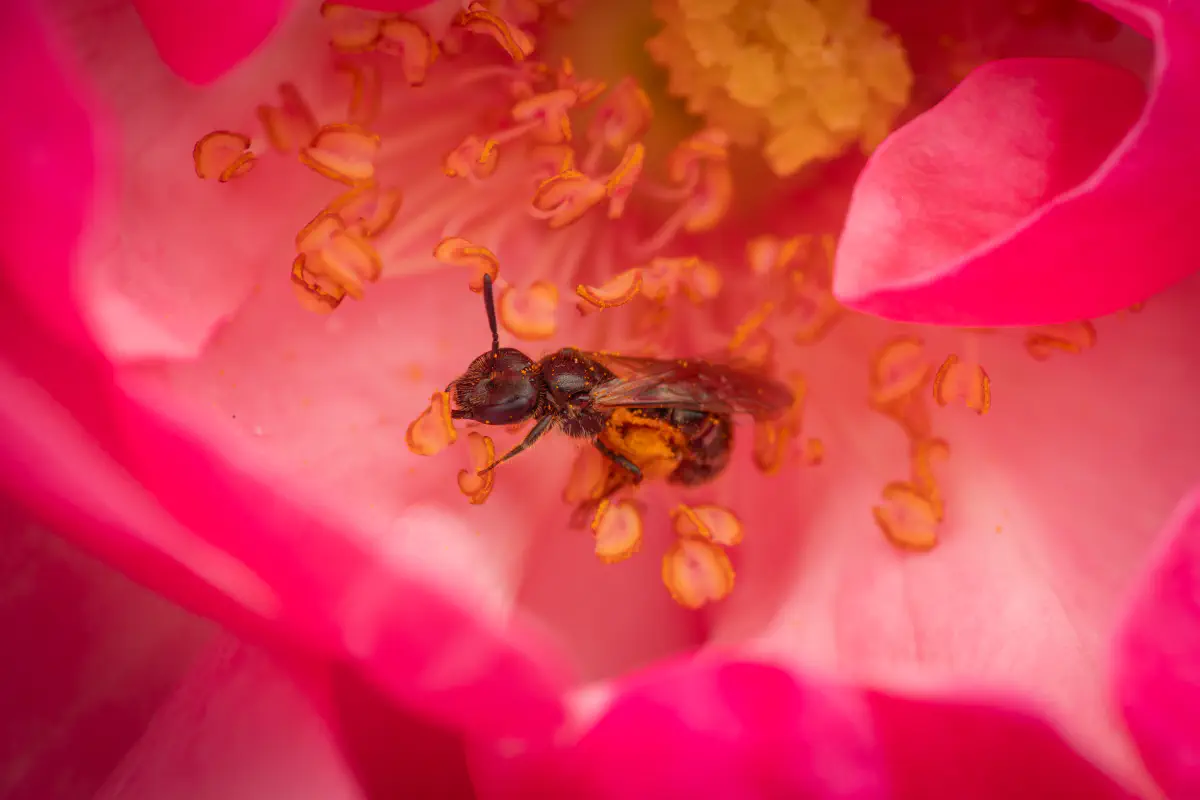
Ancestry Graph
Further Information
„Sweat Bees“ on iNaturalist.org
Copyright

This article uses material from the Wikipedia article Halictidae the free encyclopedia Wikipedia which is released under Creative Commons Attribution-ShareAlike 4.0 International License). On Wikipedia a list of authors is available.

Little beings in print
Order our calendars and books today!
Compiled with love. Printed sustainably. Experience our little beings even more vividly in print. All our publications are available for a small donation.
